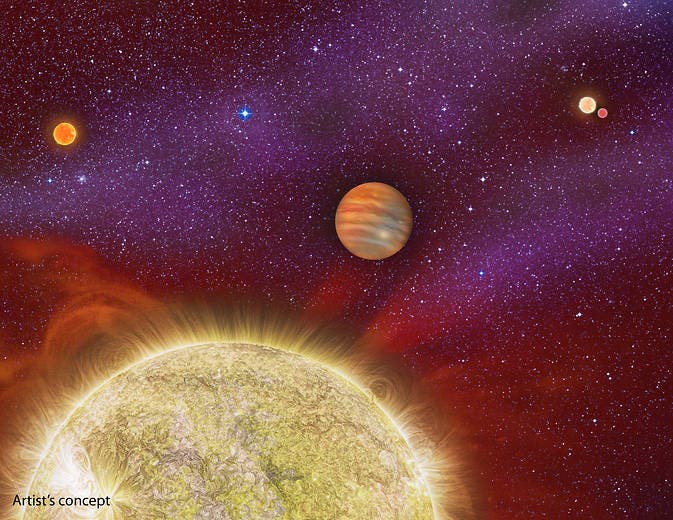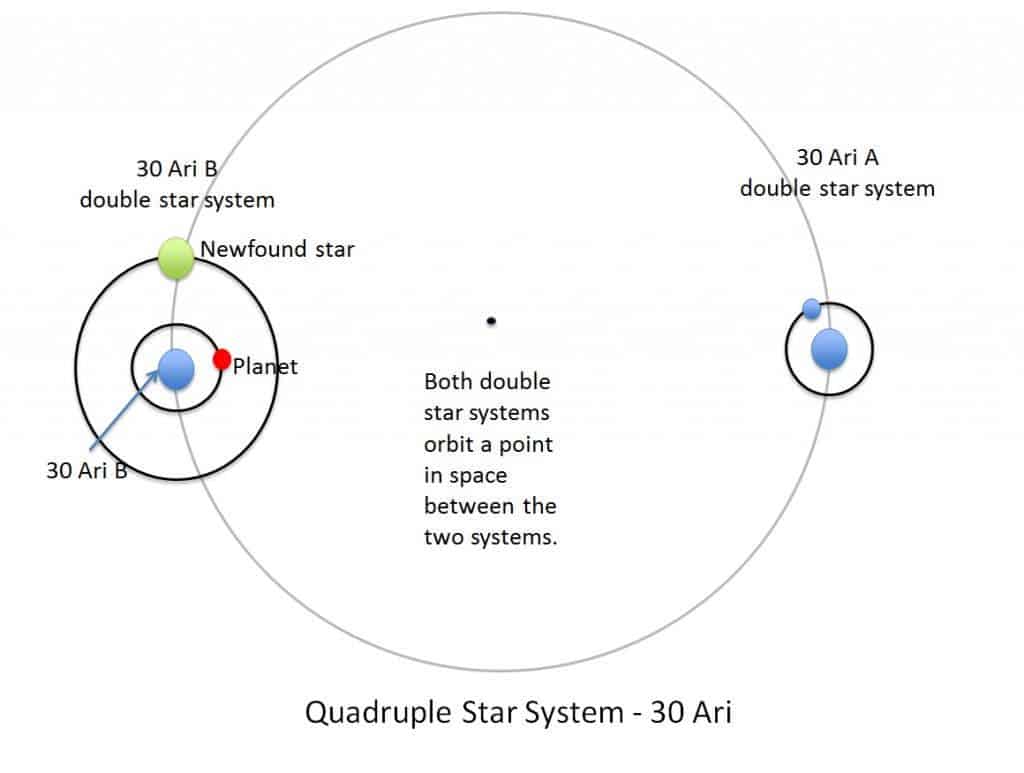For the second time, astronomers have discovered a planet in a solar system with four stars! While most solar systems only have one star, two stars are pretty rare, three are very rare, and four stars… that almost never happens – or at least this is what we thought.

This artist’s conception shows the 30 Ari system, which includes four stars and a planet.
Image Credit: Karen Teramura, UH IfA
The planet wasn’t newly discovered, but previously, astronomers thought it resides in a three star system. The discoveries were made using instruments fitted to telescopes at the Palomar Observatory in San Diego. The first four-star planet, KIC 4862625, was discovered in 2013, not by NASA researchers, but by citizen scientists using public data from NASA’s Kepler mission.
The system involves two pairs of two stars, slowly rotating around each other at great distances. This discovery might indicate that this type of system, with pairs of stars may not actually be as uncommon as thought.
“About four percent of solar-type stars are in quadruple systems, which is up from previous estimates because observational techniques are steadily improving,” said co-author Andrei Tokovinin of the Cerro Tololo Inter-American Observatory in Chile.
The planet in the system is a gas giant, with 10 times the mass of Jupiter, and it orbits its primary star every 335 days. The primary star has a relatively close partner star, which the planet does not orbit. If you could somehow go to the surface of this planet and take a look at the skies, you’d likely only see three stars – a dim one, and two pretty bright ones.

The four stars and one planet of the 30 Ari system are illustrated in this diagram.
Image Credit: NASA/JPL-Caltech
“Star systems come in myriad forms. There can be single stars, binary stars, triple stars, even quintuple star systems,” said Lewis Roberts of JPL, lead author of the new findings appearing in the journal Astronomical Journal. “It’s amazing the way nature puts these things together.”
Source: NASA.









